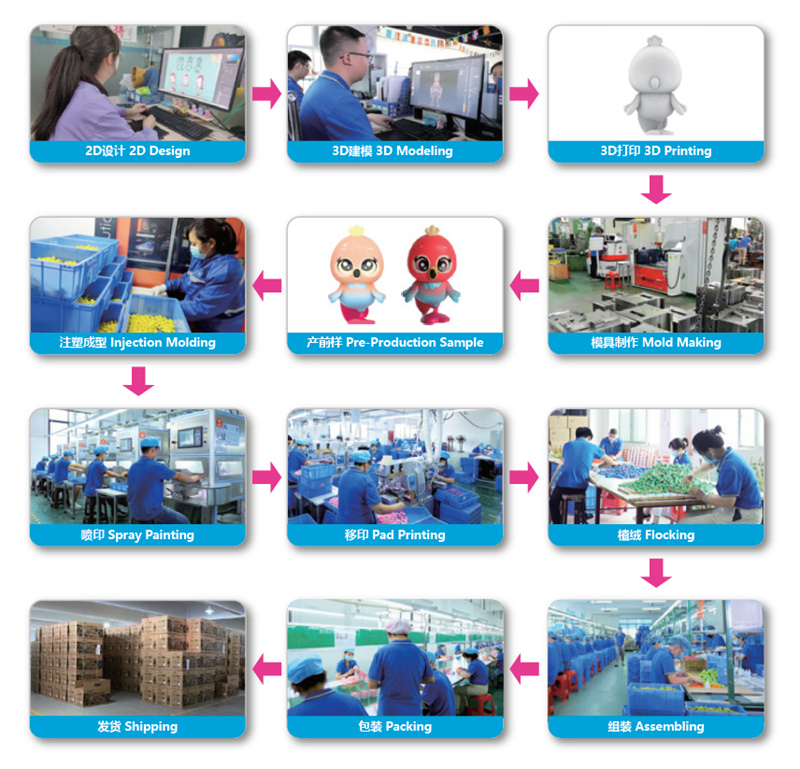Plastics have become an essential material in toy manufacturing, dominating the industry for decades. From action figures to building blocks, plastic toys are everywhere due to their versatility, durability, and affordability. Some of the most well-known toy brands, such as LEGO, Mattel, Hasbro, Fisher-Price, Playmobil, and Hot Wheels, have built their success on plastic-based products. But what exactly is plastic? Why is it so widely used in the toy industry? And what are its environmental impacts? Let's dive into everything you need to know about plastics for toy making.
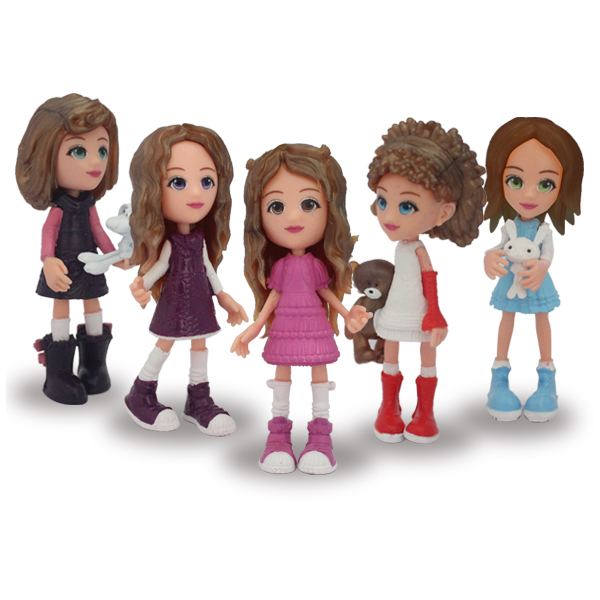
What is Plastic?
Plastic is a synthetic material made from polymers, which are long chains of molecules derived mainly from petroleum and natural gas. It can be molded into various shapes, making it an ideal material for manufacturing toys. Different types of plastics, such as mainstream plastics like PVC, ABS, and polyethylene, offer unique properties that cater to various toy requirements. We'll dive into more details in the following sections.
The widespread use of plastic in toys began in the mid-20th century, replacing traditional materials like wood, metal, and fabric. With the rise of injection molding technology in the 1940s and 1950s, toy manufacturers could mass-produce detailed and affordable plastic toys, sparking a golden era in the industry. However, as plastic toys became a global phenomenon, concerns over safety, sustainability, and recyclability grew.
Why Are Plastics So Popular in the Toy Industry?
Plastics have revolutionized the toy industry for several reasons:
• Durability: Unlike wood or fabric, plastic can withstand rough handling, making toys last longer.
• Affordability: Plastic production is cost-effective, enabling manufacturers to produce toys in bulk at lower prices.
• Versatility: Plastic can be molded into any shape, allowing for intricate toy designs.
• Safety: Many plastics are lightweight and shatter-resistant, reducing injury risks for children.
• Easy to Clean: Plastic toys are water-resistant and can be cleaned easily, ensuring better hygiene.
Now, let's get a closer look at the different types of plastics used in the toy industry.
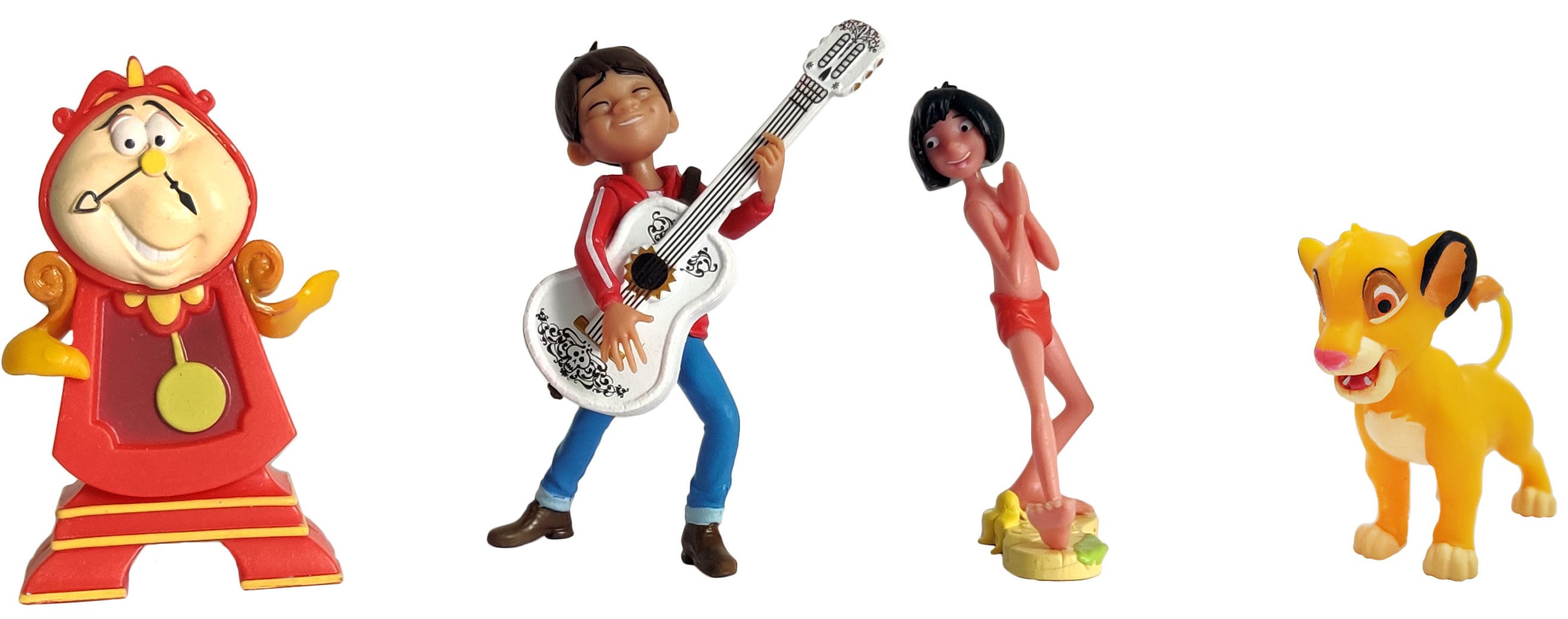
What Types of Plastics Are Used for Toys?
There are various types of plastics used in toy manufacturing, each offering distinct characteristics:
• ABS (Acrylonitrile Butadiene Styrene)
ABS is a highly durable and impact-resistant plastic known for its rigidity and toughness. It is widely used in toys that require long-lasting performance, such as LEGO bricks and ABS action figures. It is non-toxic and offers a smooth, glossy finish that enhances the toy's aesthetic appeal.
• PVC (Polyvinyl Chloride)
PVC is a flexible and soft plastic that is commonly found in dolls, inflatable toys, and squeeze toys. It is cost-effective and waterproof, making it ideal for outdoor and bath toys. However, traditional PVC may contain phthalates, which are considered harmful, leading manufacturers to produce phthalate-free PVC for safer use, such as PVC figures from Weijun Toys.
• Vinyl (Soft PVC)
Vinyl, often a form of soft PVC, is a popular material for collectible figures, dolls, and vinyl toys. It offers flexibility, a smooth texture, and the ability to hold fine details, making it ideal for high-quality figurines. Modern vinyl toys are produced using phthalate-free formulas to ensure safety.
• PP (Polypropylene)
PP is a lightweight, chemical-resistant plastic that withstands high temperatures. It is commonly used in toy vehicles, containers, and storage boxes. While it is sturdy, it may become brittle in extremely cold temperatures.
• PE (Polyethylene - HDPE & LDPE)
PE is one of the most commonly used plastics due to its flexibility and durability. HDPE (High-Density Polyethylene) is tough and impact-resistant, while LDPE (Low-Density Polyethylene) is softer and more flexible. PE is widely used in plush toy stuffing, squeeze toys, and toy packaging.
• PET (Polyethylene Terephthalate)
PET is a strong, transparent plastic used in toy packaging and bottles. It is recyclable and lightweight but may degrade over time with repeated exposure to sunlight and heat. PET is often chosen for its clarity and food-safe properties.
• TPR (Thermoplastic Rubber)
TPR combines the flexibility of rubber with the processability of plastic, making it ideal for soft and squeezable toys. It is used in teething toys, stretchy figures, and grip-enhanced parts. TPR is non-toxic and hypoallergenic, making it a safe choice for children's toys.
• Resin
Resins are used in high-detail collectible toys, figurines, and specialty models. Unlike other plastics, resins are often used for small-batch production and offer exceptional fine details. However, they can be more fragile and expensive compared to other plastics.
• Bioplastics (PLA, PHA)
Bioplastics are made from renewable sources like cornstarch and sugarcane, making them eco-friendly alternatives to conventional plastics. They are biodegradable and increasingly used in sustainable toy manufacturing. However, bioplastics tend to be more expensive and may not always match the durability of traditional plastics.
• EVA (Ethylene Vinyl Acetate)
A soft, rubber-like plastic often used in foam play mats, puzzle toys, and soft play equipment. It's lightweight, flexible, and non-toxic.
• Polyurethane (PU)
Found in soft foam toys, stress balls, and cushioning for plush toys. PU foam can be flexible or rigid.
• Polystyrene (PS & HIPS)
A rigid and brittle plastic is sometimes used in toy packaging, model kits, and inexpensive plastic toys. High-impact polystyrene (HIPS) is a more durable variation.
• Acetal (POM – Polyoxymethylene)
A high-performance plastic used in mechanical toy parts such as gears and joints due to its excellent wear resistance and low friction.
• Nylon (PA – Polyamide)
Strong, wear-resistant plastic is used in certain toy parts that need high durability, such as gears, fasteners, and moving parts.
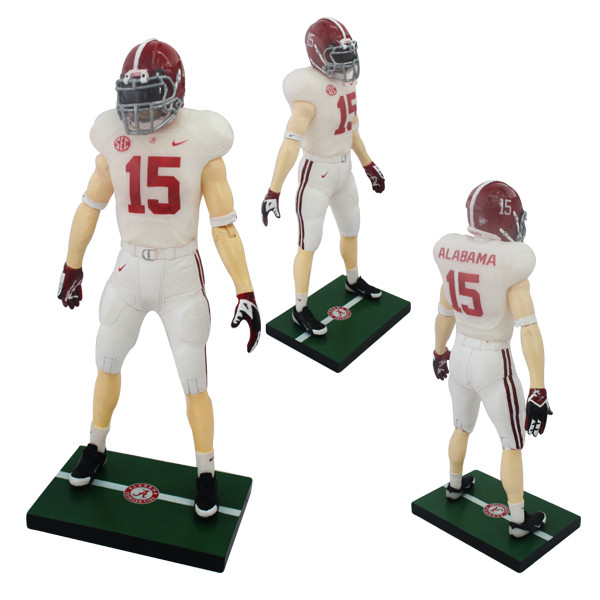
What is the Best Plastic for Toys?
When it comes to selecting the best plastic for toys, manufacturers must consider a variety of factors that impact the toy's safety, durability, environmental footprint, and overall appeal. Different plastics offer distinct benefits and drawbacks depending on the type of toy being made, the target age group, and the intended use. Below, we break down the key considerations for choosing the best plastic for toys.
1. Safety and Toxicity
Ensuring the safety of children is the highest priority in toy manufacturing. The best plastic materials for toys must meet rigorous safety standards and be free from harmful chemicals.
-
Non-toxic and Hypoallergenic: Materials used in toys must not contain toxic substances like phthalates, BPA, or lead, which can be harmful if ingested or absorbed through the skin. Plastics such as ABS, TPR, and EVA are popular for being non-toxic and safe for children's toys.
-
Regulatory Compliance: Different regions have strict regulations regarding toy safety. Plastics used in toys must comply with standards such as ASTM F963 (USA), EN71 (Europe), and other local requirements to ensure they are safe for various age groups. PVC, for instance, has been modified in recent years to eliminate harmful additives like phthalates, resulting in phthalate-free PVC suitable for toys.
2. Durability and Strength
Toys undergo a lot of wear and tear, especially in the hands of young children. The best plastic materials for toys are those that can withstand rough handling, drops, and prolonged use without losing their shape or functionality.
-
Impact Resistance: Harder plastics like ABS (Acrylonitrile Butadiene Styrene) are known for their strength and impact resistance. ABS is commonly used in toys like building blocks (e.g., LEGO bricks) and action figures because it can endure drops and rough play without breaking.
-
Long-lasting Performance: For toys that need to last for years, ABS and PVC are excellent options. They offer long-term durability while maintaining structural integrity.
3. Flexibility and Comfort
Some toys require more flexible, soft materials, especially those designed for younger children or teething infants. The right plastic should be comfortable to handle, safe to touch, and easy to manipulate.
-
Soft and Flexible Materials: TPR (Thermoplastic Rubber) and EVA (Ethylene Vinyl Acetate) are commonly used in toys that need to be soft and flexible. TPR is often used for teething toys, stretchy figures, and toys with a rubbery feel, while EVA is used for foam mats and soft toys due to its lightweight and flexible properties.
-
Comfort and Safety: These materials are ideal for creating toys that children can chew, squeeze, and hug, ensuring they are both safe and comfortable.
4. Environmental Impact
As environmental concerns grow, more and more toy manufacturers are seeking to reduce their ecological footprint by choosing sustainable materials. The best plastics for eco-friendly toys are those that are recyclable, biodegradable, or made from renewable sources.
-
Recyclability: Plastics like PET (Polyethylene Terephthalate) and PE (Polyethylene) are recyclable, which helps reduce waste and promote a circular economy. PET is often used for toy packaging and bottles, while PE is common in packaging, plush toy stuffing, and squeeze toys.
-
Biodegradability and Sustainability: Bioplastics, such as PLA (Polylactic Acid) and PHA (Polyhydroxyalkanoates), made from renewable resources like cornstarch and sugarcane, are increasingly being used in sustainable toy manufacturing. These plastics are biodegradable, offering a more eco-friendly alternative to traditional plastics, although they can be more expensive to produce.
-
Limited Environmental Impact: While materials like PVC and Nylon are widely used in toys, they have a higher environmental impact due to their limited recyclability and the complexity of their production process. However, advancements in eco-friendly formulations (e.g., phthalate-free PVC) are helping to reduce their environmental footprint.
5. Aesthetic Quality and Finish
The visual appeal and texture of a toy are critical to its success, especially in the case of collectibles and premium items. The right plastic should allow for vibrant colors, intricate detailing, and smooth finishes.
-
Color and Finish: ABS offers a smooth, glossy finish and vibrant colors, making it ideal for toys like action figures, building blocks, and interactive toys. Vinyl also provides a glossy finish and is great for toys requiring intricate details, such as collectible figurines.
-
Fine Detailing: For high-quality, collectible toys, plastics like resin and vinyl are often used due to their ability to hold fine details. These materials allow for more elaborate designs and small batch production, making them ideal for premium collectibles.
6. Cost-Effectiveness
Cost is always a consideration when choosing the best plastic for toys. Manufacturers must balance the material’s benefits with its cost to ensure the toy remains affordable for consumers.
-
Affordable Plastics: Plastics like PVC, PE, and EVA are cost-effective and widely used for mass-produced toys. These materials offer durability and flexibility while being more affordable than other alternatives.
-
Production Efficiency: Some plastics, such as ABS and PVC, are easier to mold and require less time in the manufacturing process, leading to lower production costs. For more detailed or specialized toys, resin may be chosen, though it comes at a higher cost due to its small-batch production nature.
7. Age Appropriateness
Not all plastics are suitable for every age group. Younger children, especially infants and toddlers, require materials that are softer and safer, while older children may require more durable and rigid plastics.
- Age-appropriate Materials: For toys intended for babies and young children, soft, non-toxic plastics like TPR and EVA are often chosen. For toys aimed at older children or collectors, materials like ABS, PVC, and resin provide the durability and fine details needed for long-lasting play.
By considering safety, sustainability, durability, and cost, manufacturers can make more informed decisions about the plastics they use in toy production, ensuring they meet consumer needs while also minimizing environmental harm.
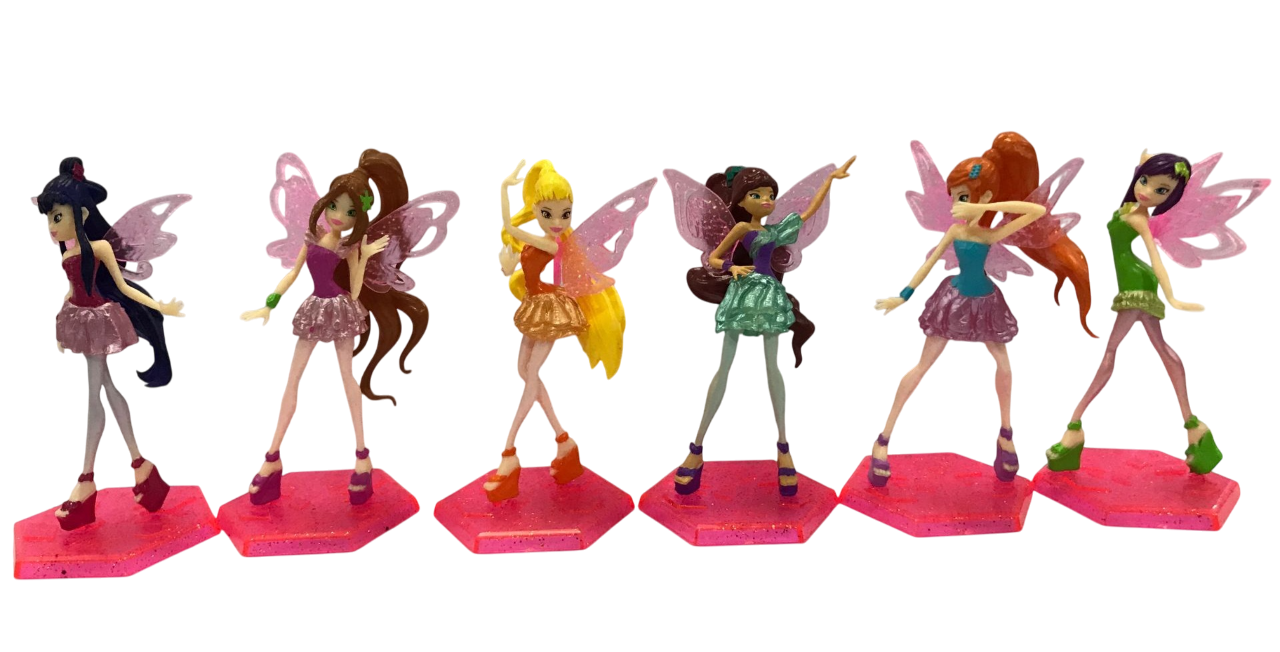
Plastic Material Comparison Chart
Now, let's see the comparison of the plastic materials which may help in finding out the best one for the toys you make.
| Plastic Type | Properties | Common Uses | Durability | Safety | Environmental Impact |
| ABS (Acrylonitrile Butadiene Styrene) | Tough, impact-resistant | LEGO, action figures | ⭐⭐⭐⭐ | ✅ Safe | ❌ Not easily recycled |
| PVC (Polyvinyl Chloride) | Flexible, waterproof | Dolls, squeeze toys | ⭐⭐⭐ | ⚠️ Phthalate-free versions safer | ❌ Not easily recycled |
| PP (Polypropylene) | Lightweight, chemical-resistant | Toy vehicles, containers | ⭐⭐⭐ | ✅ Safe | ✅ Recyclable |
| PE (Polyethylene - HDPE & LDPE) | Flexible, durable | Plush stuffing, squeeze toys | ⭐⭐⭐ | ✅ Safe | ✅ Recyclable |
| PET (Polyethylene Terephthalate) | Strong, transparent | Packaging, bottles | ⭐⭐⭐ | ✅ Safe | ✅ Highly recyclable |
| Vinyl (Soft PVC) | Smooth, flexible | Collectible figures, dolls | ⭐⭐⭐ | ✅ Phthalate-free options available | ❌ Limited recyclability |
| TPR (Thermoplastic Rubber) | Soft, rubber-like | Teething toys, stretchy figures | ⭐⭐⭐ | ✅ Safe | ❌ Not widely recycled |
| Resin | Detailed, rigid | Collectible figurines | ⭐⭐⭐ | ✅ Safe | ❌ Not recyclable |
| PA (Polyamide - Nylon) | High strength, wear-resistant | Gears, mechanical toy parts | ⭐⭐⭐⭐ | ✅ Safe | ❌ Not easily recycled |
| PC (Polycarbonate) | Transparent, impact-resistant | Lenses, electronic toy casings | ⭐⭐⭐⭐ | ✅ Safe | ❌ Difficult to recycle |
| PLA (Polylactic Acid - Bioplastic) | Biodegradable, plant-based | Eco-friendly toys, packaging | ⭐⭐⭐ | ✅ Safe | ✅ Biodegradable |
Why Are Plastic Toys Bad for the Environment?
Despite their advantages, plastic toys pose significant environmental challenges:
• Non-Biodegradable: Most plastics take hundreds of years to decompose, leading to landfill accumulation.
• Microplastic Pollution: When plastic breaks down, it turns into microplastics, which contaminate soil and water sources.
• Toxic Chemicals: Some plastics contain harmful chemicals that can leach into the environment.
• High Carbon Footprint: The production of plastic requires fossil fuels, contributing to carbon emissions.
Are Plastic Toys Recyclable?
Recycling plastic toys is challenging due to the mix of different plastic types, dyes, and embedded components. However, some plastics, such as PET (Polyethylene Terephthalate) and HDPE (High-Density Polyethylene), are recyclable. Many toy manufacturers are now adopting bioplastics and recycled plastics to reduce environmental impact.
Are Plastic Toys Recyclable?
Recycling plastic toys is challenging due to the mix of different plastic types, dyes, and embedded components. However, some plastics, such as PET (Polyethylene Terephthalate) and HDPE (High-Density Polyethylene), are recyclable. Many toy manufacturers are now adopting bioplastics and recycled plastics to reduce environmental impact.
How are Plastic Toys Made?
Plastic toy production typically involves injection molding, blow molding, and rotational molding. The process includes designing the mold, heating the plastic, injecting it into molds, cooling it, and finishing with painting or assembly.
Below is the general production process of plastic toys at Weijun Toys.
Conclusion
Plastics such as PVC, vinyl, ABS, Polypropylene (PP), and Polyethylene (PE) have long been the materials of choice in toy manufacturing due to their versatility, durability, and cost-effectiveness. However, as concerns over safety and environmental impact increase, manufacturers are seeking safer and more sustainable alternatives to ensure a responsible future for toy production. At Weijun, we prioritize the use of high-quality, safe materials that meet international safety standards. We recommend that brands partner with manufacturers like Weijun, who are committed to both safety and innovation in creating eco-friendly and responsible toy products.
Let Weijun Be Your Trusted Plastic Toy Manufacturer
Weijun Toys specializes in OEM & ODM plastic toy manufacturing, helping brands create custom figures using plastic PVC, ABS, vinyl, TPR, and more. Contact us today. Our team will give you a detailed and free quote ASAP.


